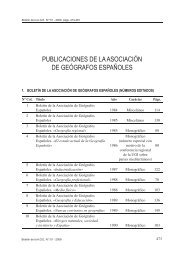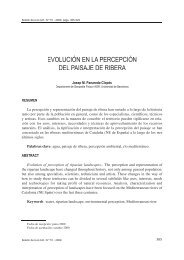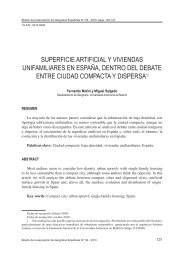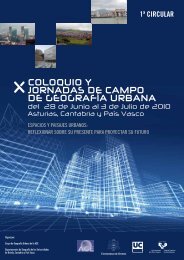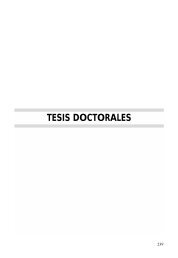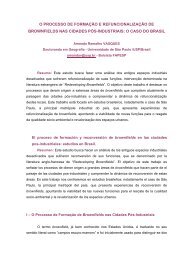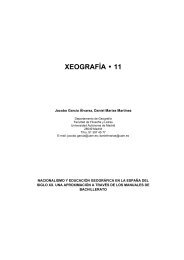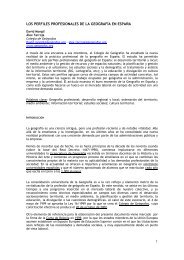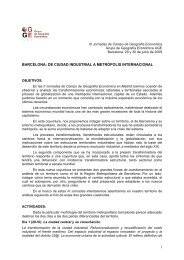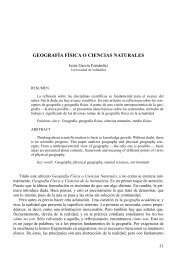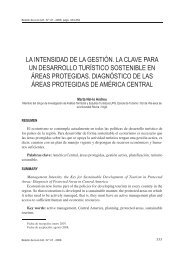Imperialism, colonialism and cartography
Imperialism, colonialism and cartography
Imperialism, colonialism and cartography
Create successful ePaper yourself
Turn your PDF publications into a flip-book with our unique Google optimized e-Paper software.
58 JEFFREY C. STONEcontinent. The freedom was for Europeans to competefor trade, not for Africans to obstruct it (Hargreaves,1984) <strong>and</strong> the imperial relationship was essentiallyinternational in character, being based on mutualityof interests among European powers. The Europeaninternational imperialism which was promoted inBerlin in 1884 is equally evident in the founding ofthe International African Association at the BrusselsGeographical Conference in 1876 (Bridges, 1980) <strong>and</strong>indeed it is a relationship which can be traced backthrough at least four centuries. By contrast, the periodof direct European colonial rule which began neverthelessin the 1890s <strong>and</strong> which is differentiated byparochial European nationalism <strong>and</strong> exclusivity, canbe regarded as an abnormal <strong>and</strong> brief but influentialinterlude in the imperial relationship between Africa<strong>and</strong> Europe. The relatively ephemeral nature of<strong>colonialism</strong> by contrast with imperialism in Africa isemphasized by projecting forward to the postcolonialperiod, for example to the successivenegotiations of the Lome Conventions between theEEC <strong>and</strong> the largely African ACP states. Only tinyresiduals of European <strong>colonialism</strong> remain in Africabut the very long st<strong>and</strong>ing imperial relationship isarguably evolving. European imperialism in Africa ischaracterized by collaborative internationalism <strong>and</strong>historical continuity, whereas <strong>colonialism</strong> was arelatively brief assertion of competitive Europeannationalism. The difference has great significancein underst<strong>and</strong>ing the cartographic evolution ofAfrica.Pre-colonial <strong>cartography</strong> of the interior of Africahas long been seen as dividing into two distinctphases, which are of debatable validity <strong>and</strong> whichobscure the reality of the forces operative. The earlierphase is characterized by its use of Ptolemaic conceptions,particularly for the source of the Nile, <strong>and</strong> isepitomized by the eight-sheet map of Africa of 1564by Gastaldi whose subsequent influence is apparent inthe depictions of Africa by Ortelius (1570), Speed(1627), Blaeu (1642) <strong>and</strong> others. Supposedly, theturning point in the <strong>cartography</strong> of Africa is located inthe ‘Age of Reason’, in the maps of the French school,notably De L’Isle (1700) <strong>and</strong> d’Anville (1727) (Tooley,1969). A scientific approach lead to the removal ofmany legends <strong>and</strong> assumptions by the innovatorswho achieved marked gains in accuracy <strong>and</strong> werefamous for their blank spaces (Lane-Poole, 1950;Klemp, 1968; Tooley, Bricker <strong>and</strong> Crone, 1976;Wallis, 1986) which are allegedly indicative of ascientific attitude of mind. But contemporary wisdomabout the interior of Africa was set aside in favour ofblank spaces as early as 1666 by Vossius (R<strong>and</strong>les,1956), while the Ptolemaic tradition of Africa wasitself replete with blank spaces <strong>and</strong> the use of theword ‘incognita’.Sixteenth <strong>and</strong> seventeenth century <strong>cartography</strong>employed such contemporary sources as were available<strong>and</strong> made significant changes in the depiction ofAfrica (Ouwinga, 1975) in the same way that JamesMacQueen (1856) made substantial changes to themap of Central Africa in the nineteenth century, albeitwith different subject matter <strong>and</strong> quality of data. Justas Almeida was critical of previous depictions ofEthiopia in the seventeenth century (Skelton, 1958),so eighteenth century cartographers reacted to thework of their predecessors, given new sources toh<strong>and</strong>. There is methodological continuity linkingeighteenth century <strong>and</strong> both earlier <strong>and</strong> latercartographers,The critical circumstances for methodological continuityin the mapping of Africa over four centuries bycartographers from several European countries wasmovement of information about Africa within Europe.Certainly, commercial competition meant that thenavigational information of the Dutch, for example,remained secret (Ouwinga, 1975). Nevertheless, originalinformation about Africa did disseminate withinEurope under the commercial impetus of publication.Perhaps the most striking example, which challengesthe conception of the eighteenth century Frenchschool as innovatory in its critical attitudes or itssources, <strong>and</strong> also demonstrates the manner in whichinformation disseminated for commercial gain, is the1665 Portuguese Atlas of Africa by Joao TeixeiraAlbernaz II. The atlas was commissioned by aFrenchman <strong>and</strong> together with other Portuguesesource material, it was used to transform previousdepictions of the Zambezi basin by Jaillot (1678) aFrenchman, by Berry (1680) an Englishman <strong>and</strong> byCoronelli (168.3) a Venetion, in their maps of Africa,before inspiring De L’Isle <strong>and</strong> d’Anville (Cortesão<strong>and</strong> da Mota, 1960). In the past, the commercial <strong>and</strong>strategic divisions within Europe have been stressedin seeking to comprehend the evolving early <strong>cartography</strong>of Africa, but it is the facility with whichPortuguese information disseminated throughoutEurope in the form of the printed map which isstriking. This is underst<strong>and</strong>able, given the essentiallycollaborative nature of European imperialism towardsAfrica.The pre-colonial cartographic depiction of Africarepresents evolution not transformation. The conceptof an eighteenth century reformation derives from



